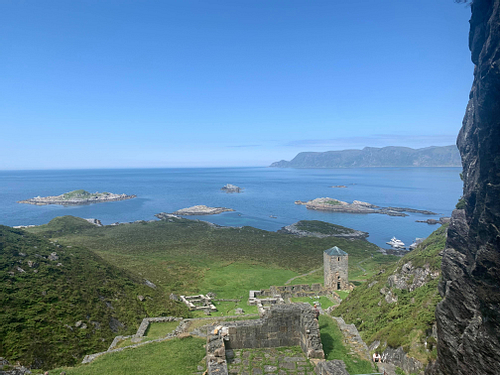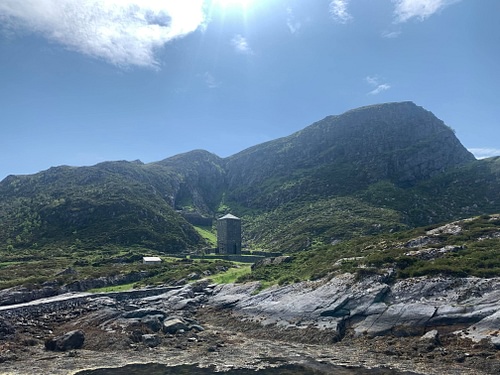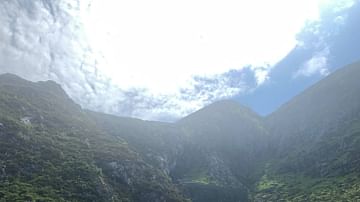Selja monastery has been considered one of the most sacred sites in Norway for more than 1000 years. The monastery is connected to the legend of St. Sunniva (10th century CE), who is the only female Norwegian saint, and was for a long time an important pilgrimage site in the country, second only to The Nidaros Cathedral in Trondheim. The historical context as well as the wild and enchanting surroundings still draw many visitors to the island and its monastery. It leaves a lasting impression on those who venture there.
The Legend of St. Sunniva
The religious importance of the island of Selja starts with the legend of Saint Sunniva and the “Seljamen”, which supposedly happened during the 10th century CE. The legend is recorded in three different sources - Acta Sanctorum in Selio (1170 CE); Óláfs saga Tryggvasonar (c. 1190 CE by Oddr Snorrason, Iceland); and Flateyjarbók (14th century CE, Iceland) - but was first mentioned by Adam of Bremen (1040-1081 CE), who visited the island c. 1070 CE. Adam of Bremen's visit took place 70-80 years after Olav Tryggvason, the first Christian king of Norway (r. 995-1000 CE), supposedly found the remains of St. Sunniva in the cave where she was buried in 996 CE.
According to the legend, St. Sunniva was a Christian Irish princess who had to flee from her home. A heathen and violent king, possibly a Viking chief, sought to take control over her land and force her to marry him. The Irish princess escaped by boat, together with some of her people and her brother Alban. Alban was later mistakenly associated with the English St. Alban (3rd or 4th century CE), who the monastery later would be dedicated to. The boat was caught in rough weather and brought St. Sunniva and her company to the coast of Norway. They were stranded on Selja island, took shelter there in a cave, and settled on the previously uninhabited island.
Norway was at that time ruled by Jarl Håkon Sigurðarson (r. c. 975-995 CE), a pagan king known for strongly opposing the Christianization of Norway. The people living on the mainland not far from Selja were skeptical about the new Christian settlers and sent word to Jarl Håkon accusing their new neighbors of stealing sheep. Jarl Håkon went to the island with a group of armed men with the intent of killing the Irish princess and the new inhabitants. St. Sunniva and her company hid in the cave and prayed to God for a miracle to protect them from the wrath of the heathens. Their prayers were heard. Stones fell from the mountain above blocking the entrance to the cave, stopping Jarl Håkon's attack. Unfortunately, St. Sunniva and her followers were trapped inside the cave, and all died. Olav Tryggvason visited the cave later and found Sunniva's body preserved, looking like she had only been sleeping. This was taken as a sign of her sacredness, and the island was soon established as an important pilgrimage site.


Visiting the Monastery
If you wish to visit this captivating island, you will need to plan because you have to book a boat ride from Selje to get there, and there are usually not many departures each day. The boat ride takes approximately 15 minutes, and you will have a good two hours to explore the island before the boat picks you up again and takes you back to the mainland. A guide will lead the way to the monastery ruins, where the tower is the only fully standing structure. You can enter the tower and climb the narrow steps for a great view of the island before walking amongst the ruins and envisioning what monastic life on the weathered island was like throughout the ages. If you are lucky enough to visit on a sunny summer's day, it might be hard to understand how cold and hostile the environment must have felt during the dark, cold winters when the sea and wind sweep in from the North Sea. The monks who chose to live on the island year-round must have been truly dedicated to their service and the sacredness of the island and St. Sunniva.











